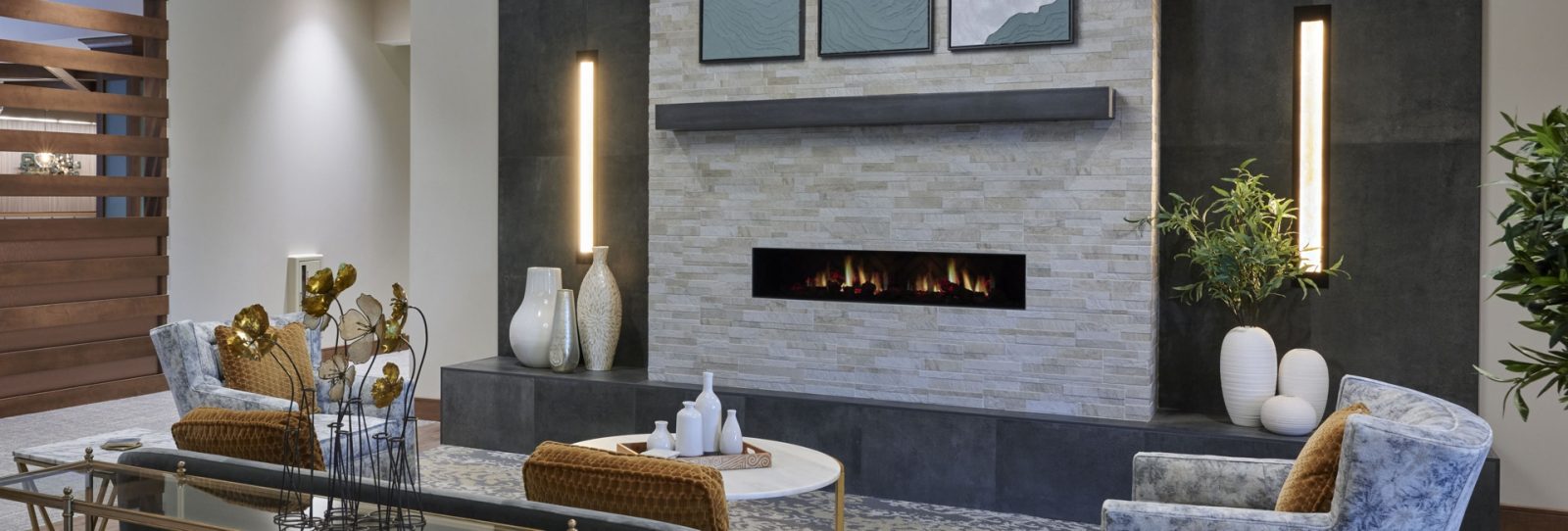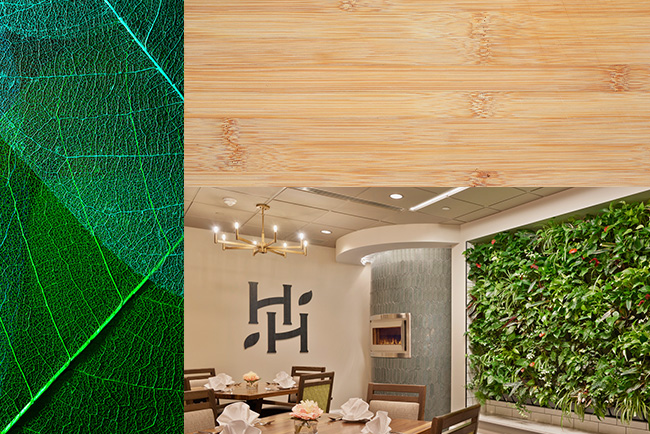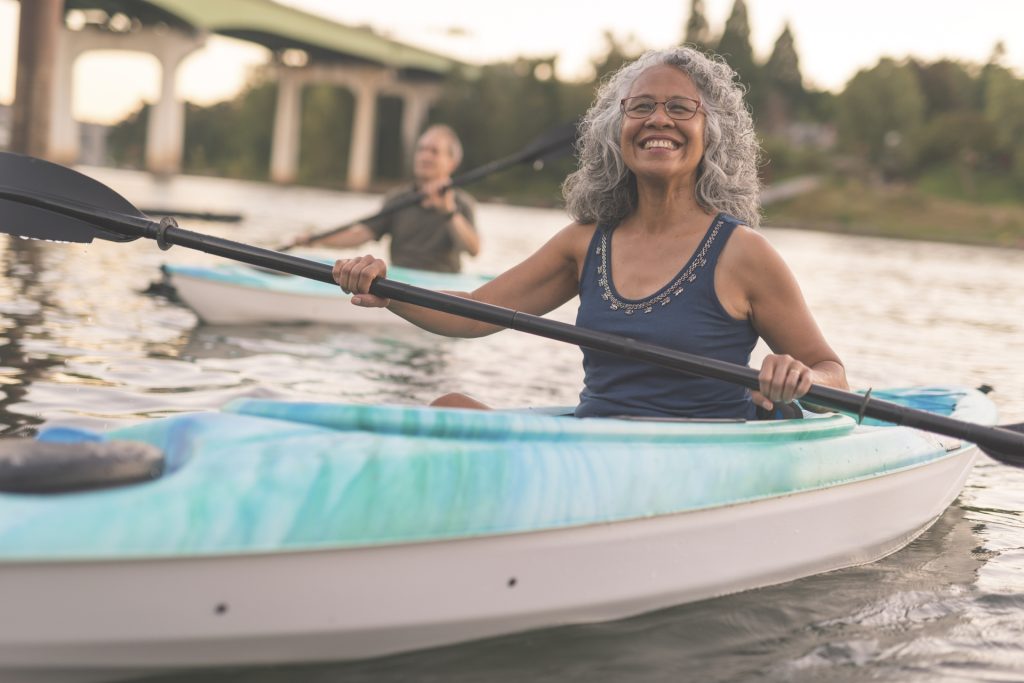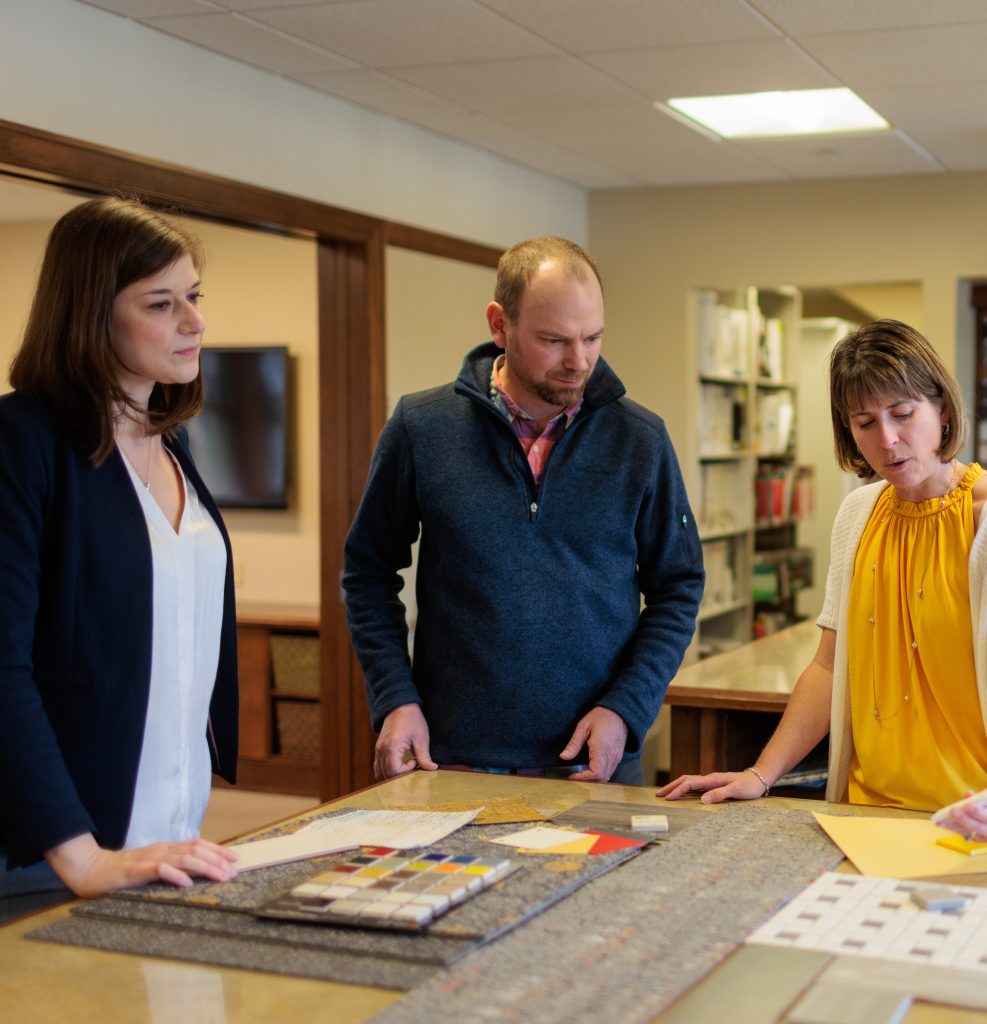When creating dynamic interior environments, fireplace design is an essential component. The presence of a fire provides a direct connection to fundamental elements of nature–warmth, light, and movement.
Fireplaces are a great addition for a variety of senior living and care settings. They can help to create a sense of place and support social connections by naturally attracting people to pull up a chair and have a conversation. The changing reds, oranges and yellows of a fire stimulate visual interest much like a sunset. And in a study titled “Fired Up: Relaxation and Hypertension Reduction through Fire with Relaxing Sounds” researchers demonstrated that fire sounds can have positive health benefits.
Fireplaces are just one way our interior designers incorporate natural patterns and processes into design. Read our Biophilic Design Strategies blog for the why’s and how’s for incorporating natural properties into the built environment.
Fireplace Design Starts with Location
During the schematic design phase of a project, we locate fireplaces in a variety of spaces: lobbies, restaurants, lounge areas, bars, living rooms, patios, rooftops and other outdoor spaces.
- DO position the fireplace in the space to maximize it as an architectural feature and a focal point while keeping flow and walking paths in mind so it does not become an impediment to use of the space.
- DON’T locate it in an out-of-the-way location where few people can see the fireplace or where it could limit people from approaching and or interacting with its natural charm.
A double-sided fireplace can help to connect adjoining spaces while a corner fireplace provides big impact in a small area.
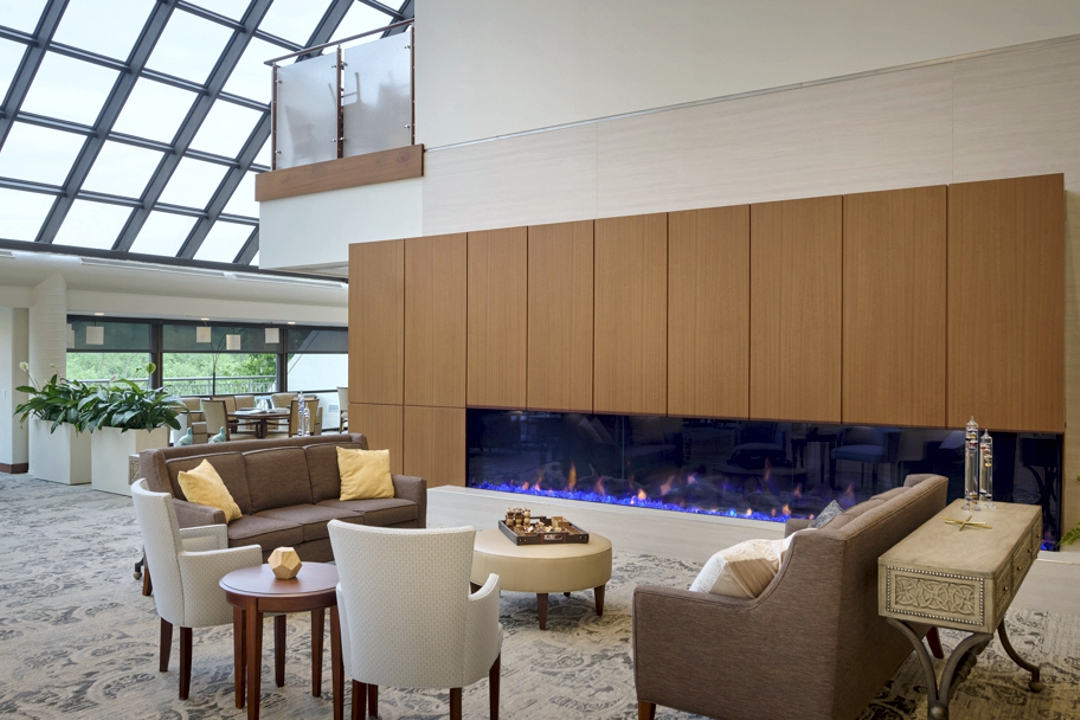
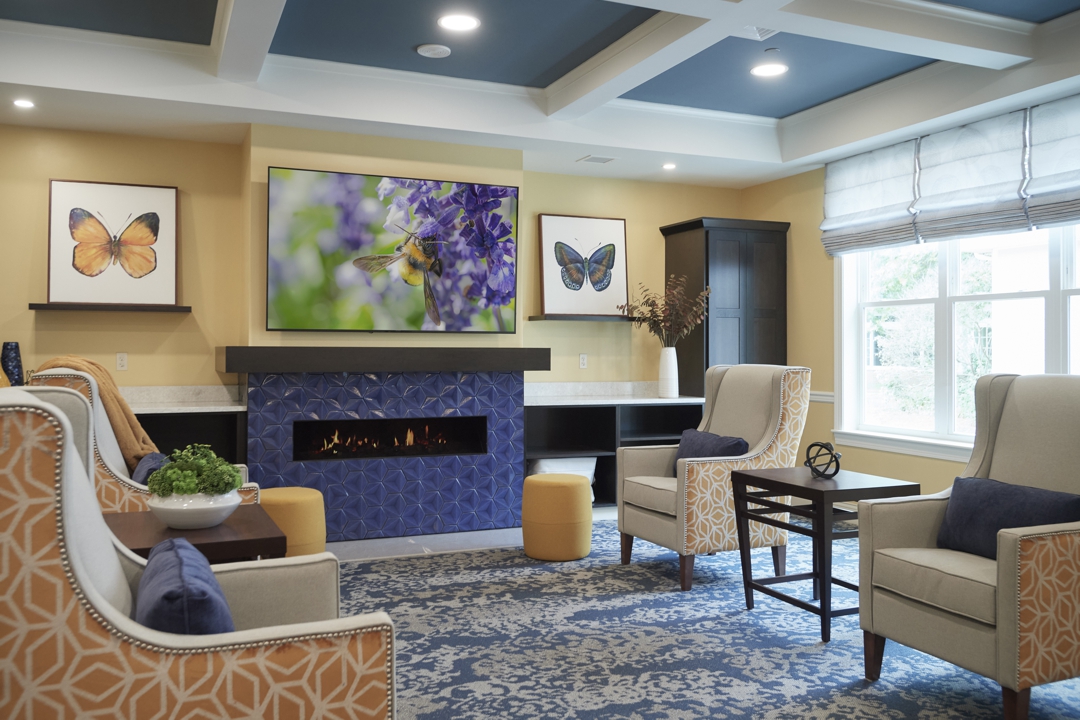
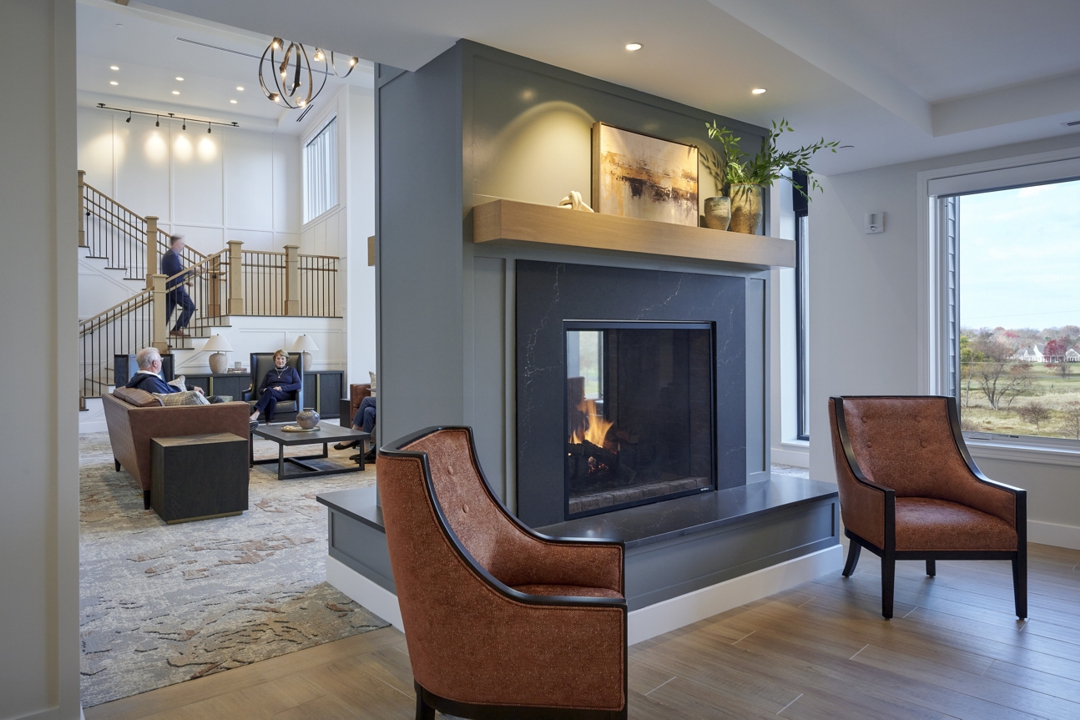
Choosing the Right Type of Fireplace
There are a variety of fireplace options: Electric, Water Vapor, Natural Gas, Bio-Fuels and Wood. Technology changes over the past five years have made electric and water vapor fireplaces more authentically appealing. Both are safer than other options, particularly for senior living settings.
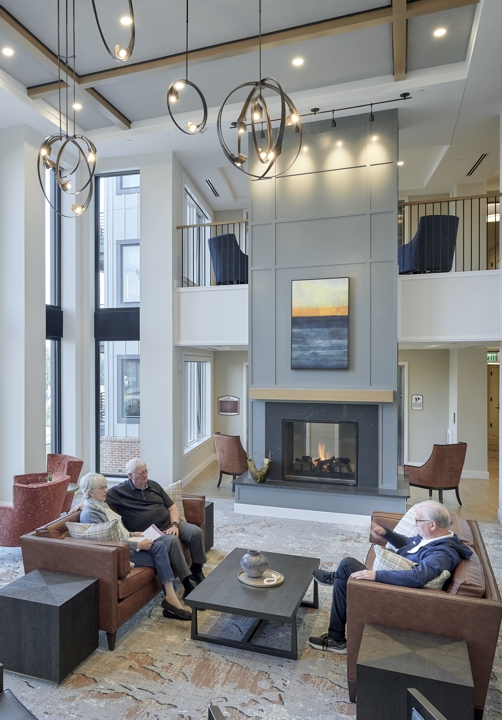 DO carefully review all the strengths and weaknesses of each type.
DO carefully review all the strengths and weaknesses of each type.- DON’T design natural gas fireplaces where exposed flames are within reach ranges of residents. Your design professional will consult building codes and regulations regarding placement in proximity to dwelling and sleeping units.
Designing for Functionality
Fireplaces in public spaces provide the perfect backdrop for a distinctive art installation. Both 2D paintings and 3D sculptural elements can be a nice solution here. The fireplace surround, real or simulated chimney feature or lighting elements can also function as dramatic visual art in the space.
- DO consider tying the wall finishes of the fireplace with the ceiling or flooring for dramatic impact.
- DON’T locate a large TV above a fireplace in a lobby space. These spaces are designed primarily for three functions: 1) A first impression waiting area; 2) An information/connection hub and 3) A lively gathering area for informal conversation or reading the local newspaper. Fireplaces are a great addition, but televisions distract from the desired social connections and are better suited to the functionality and aesthetic of a sports bar.
When placing a television above a fireplace in a dwelling unit or other common area, coordinate the mounting height with where the viewers will be sitting in the room. If the viewing angle is too great it can cause unnecessary strain on posture.
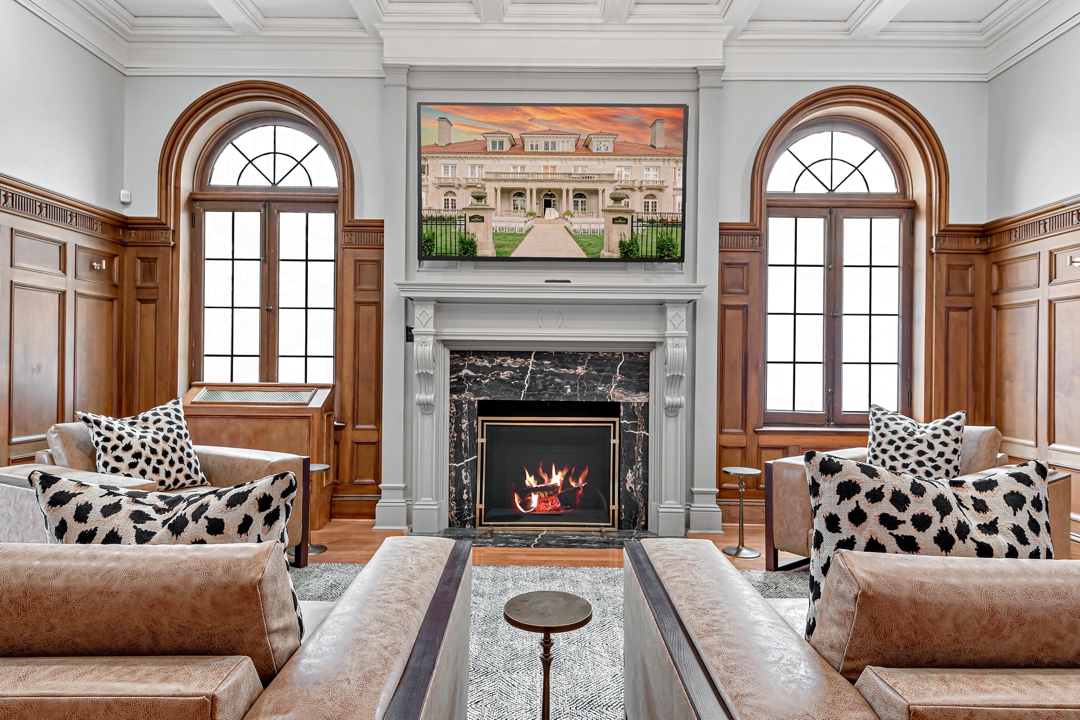
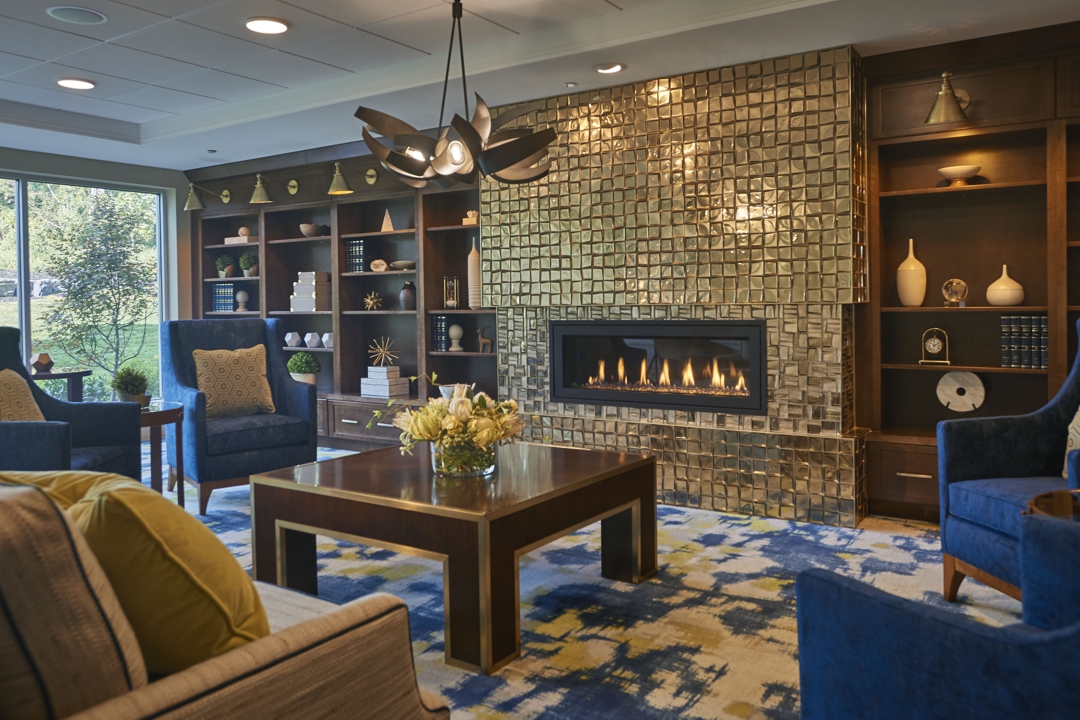
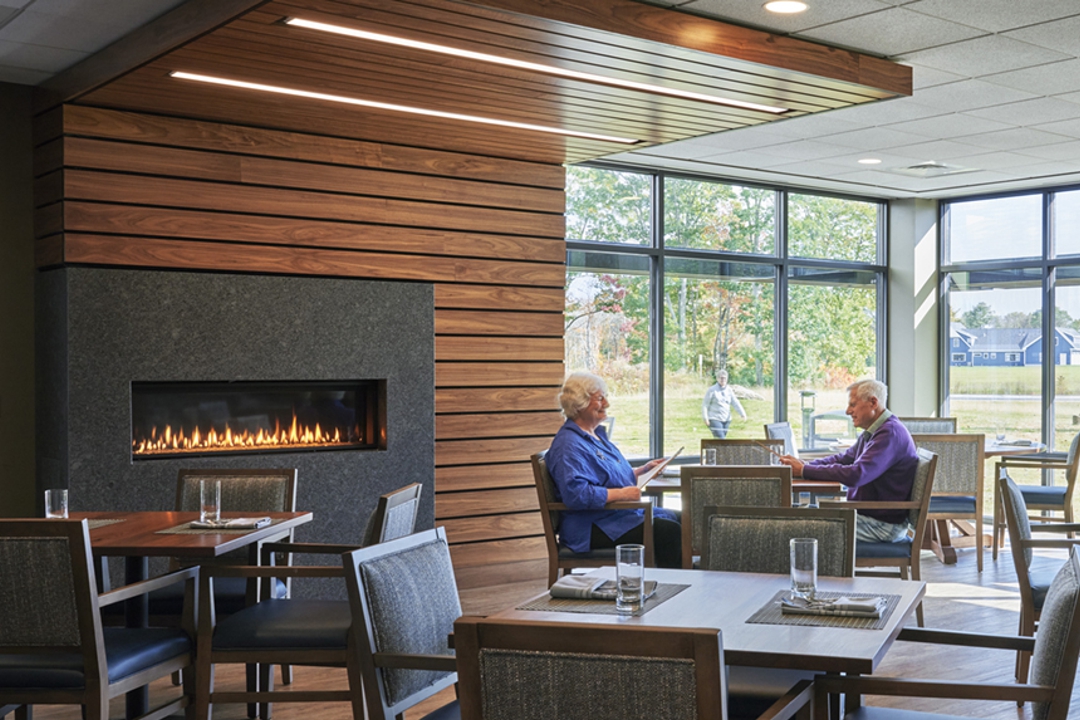
Selecting Fireplace Surround Materials
Materials selected for the fireplace surround significantly impacts the aesthetics, but they can also impact comfort and safety. Flammability clearances must be considered and non-combustible finishes used in accordance with code requirements for a particular setting’s use type.
- DON’T locate coarse and abrasive stone finishes on the outside corners as they could pose a risk of skin injuries to seniors or others who might pass by or interact with the fireplace
- DO select smooth surfaces for the outside corners that are also cleanable as this area is more likely to show wear over time.
Current fireplace trends are centered around minimalism and natural materials. Traditional brick has been giving way to more contemporary options such as tile and stone with natural and manufactured options. The design materials should align with the overall community brand and aesthetics of the space. Our interior design team might choose marble or granite for a luxurious look, reclaimed wood for environmental stewardship and a country lodge aesthetic and concrete or steel for industrial or minimalist styles.
Fireplace Design for Outdoor Applications
With the increased desire to have three season exterior spaces, many senior living communities have incorporated outdoor fireplaces, fire tables and heat lamps.
- DO locate these fire features in spaces that can be viewed while indoors and outdoors. Also be sure to appropriately locate the on/off switch for these features based on who will be operating them.
- DON’T specify or design fire tables without glass heat safety shields.
Outdoor fireplaces can create an elevated al fresco dining experience, comfortable gathering area where residents can make s’mores or sophisticated rooftop deck viewing area.
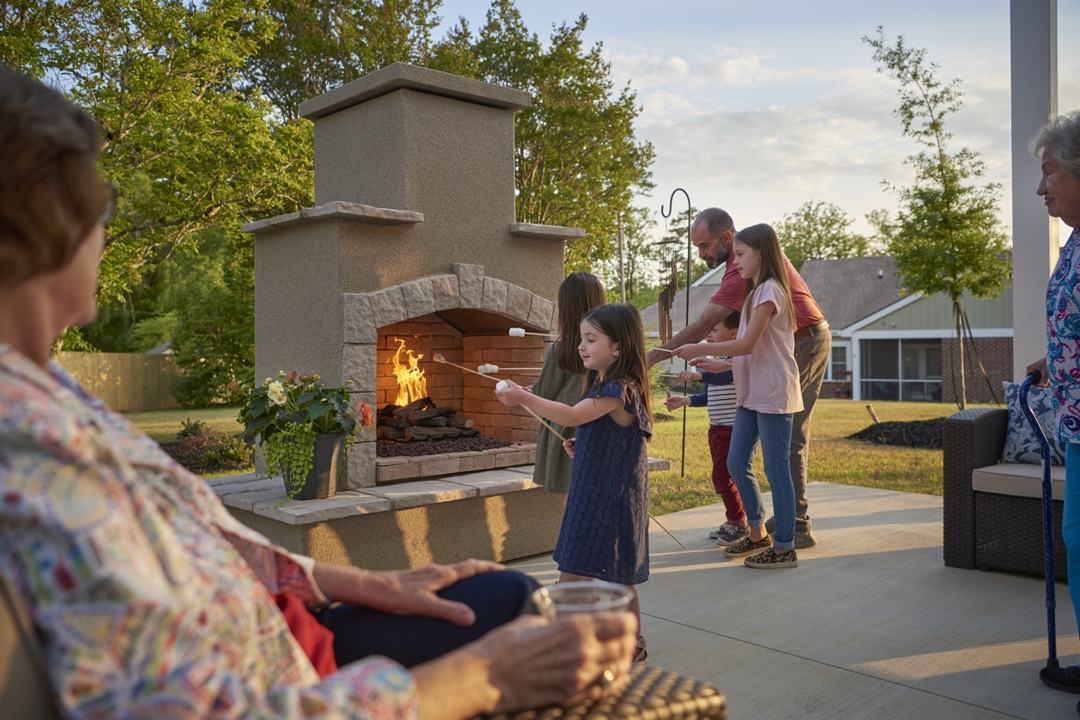
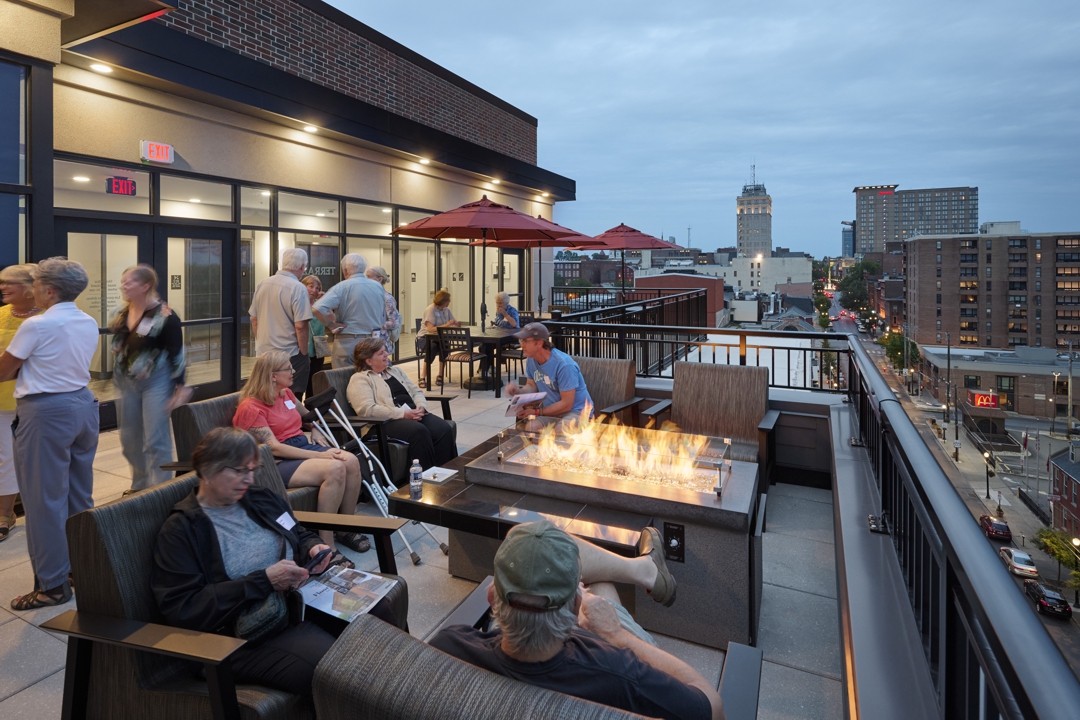
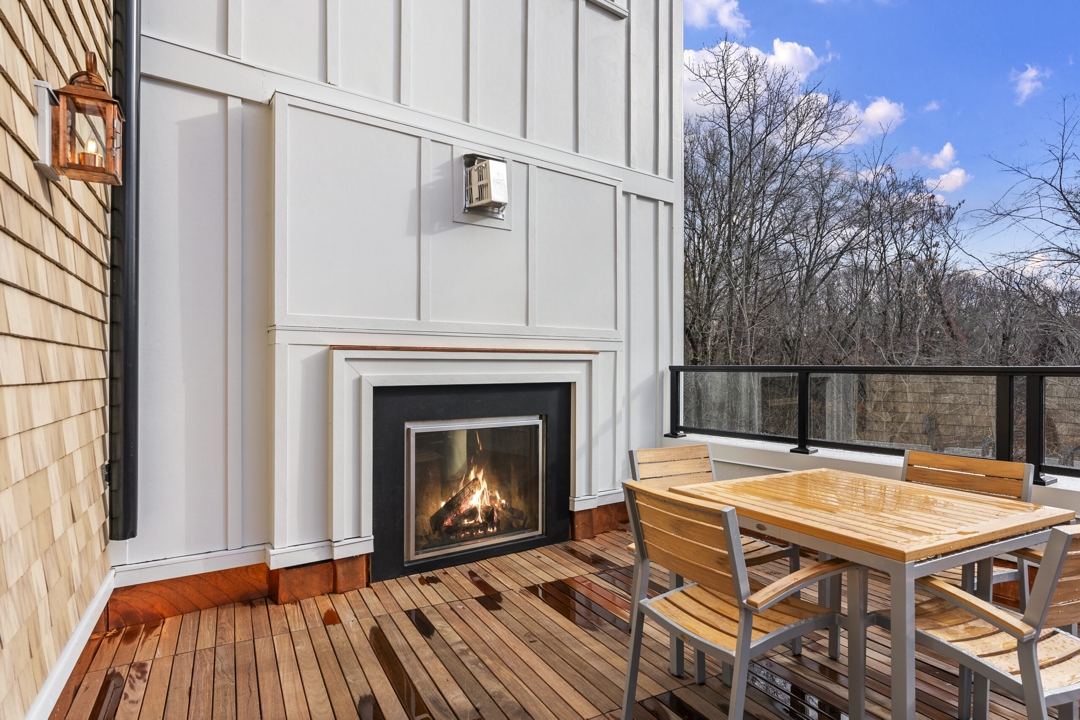
Ready to Add a Fireplace to Your Community?
These design focal points create a sense of safety, warmth, and coziness. Incorporating fireplaces thoughtfully into spaces aligns with biophilic design principles and fosters social connections. When thoughtfully designed to reflect local culture or history, they foster a sense of community and belonging.
About the Author
Matthew is an NCIDQ-certified interior designer with over 20 years of experience as a designer and craftsman. He is involved in projects from the initial conceptual design charette through design and documentation, concluding FF&E selection and installation. He recently developed strategies to delve into a client’s vision for amenity spaces via venue voice exercises and by supporting them with custom branding. As part of this effort, Matthew is a frequent presenter at state and national conferences, speaking about interior design and the value of repositioning and branding. He serves as a board member of the Columbia HARB and The Historic...
Learn More About Matthew